What does it mean to revisit the stories we’ve been told, the stories that purport to tell us who we are? And why might we do so in the first place? This is the premise that underpins What Carries Us: Newfoundland and Labrador in the Black Atlantic, an exhibition curated by Toronto-based artist, curator, and administrator Bushra Junaid at The Rooms.
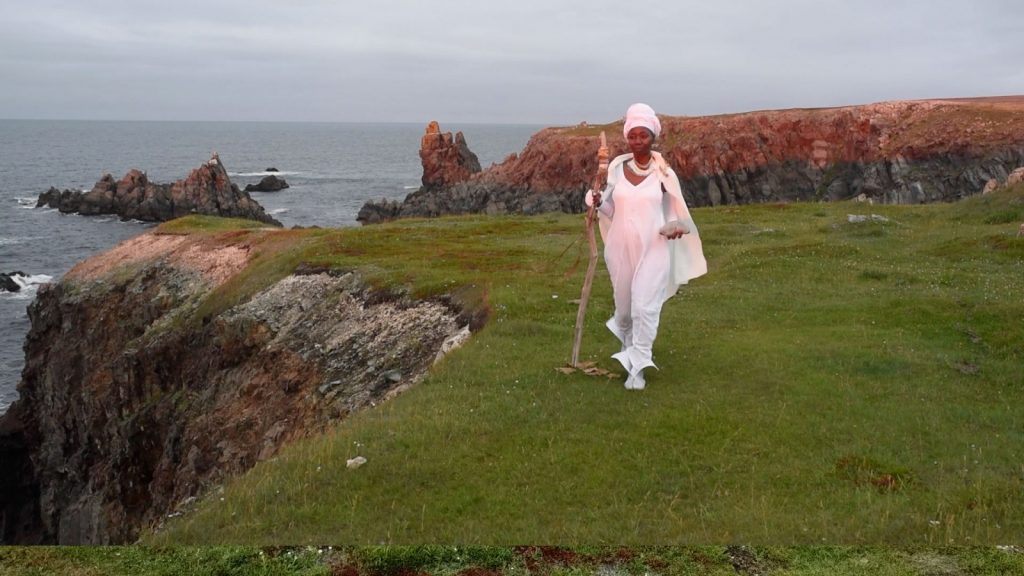
Video installation. Cinematographer and editor : Brian Ricks for the Bonavista Biennale.
Image courtesy of the artist
At a curatorial talk, Junaid stated that the impetus for this exhibition came from John Akomfrah’s Vertigo Sea (also on display at The Rooms). Akomfrah’s wash of water, sound, and history takes viewers through a constantly moving ocean, asking us to consider the oceanic sublime, a space of wonder and magic, violence, destruction, and death. It’s this wash of contradiction that Junaid locates in this place now called Newfoundland and Labrador: a wash of beauty, connection, and foodways, on the one hand, and silence, violence, and haunting, on the other.
Junaid grew up in St. John’s, and she feels the city and its landscape deep in her bones. One might then reasonably expect that she would have encountered stories of Black life during her childhood. But as she observed during her curatorial talk, such stories never formed part of her girlhood education. St. John’s, and Newfoundland and Labrador more broadly speaking, have instead long been imagined as white spaces shaped by Irish and English (and to a much lesser extent French) histories.
Perhaps it’s unsurprising that the overarching theme of the exhibition is that of silence: the silence of forcibly suppressed stories alongside the silence of lost ones. What Carries Us includes not only a variety of works by artists based in Newfoundland and Labrador, Canada, and the UK, but also archival materials and archaeological artifacts. Taken together, they invite us to reflect on storytelling and identity, and on how we might imagine things differently.
The theme of silence is told perhaps most hauntingly in the form of the garments worn by a man with the initials W.H., an otherwise anonymous sailor of African heritage whose grave in Labrador emerged in the 1980s as a result of coastal erosion. The garments rest alone in a darkened room, their story a reminder that twenty percent of all British and American sailors in the early nineteenth century were black men. What brought W.H. to these shores? How long was he here? Which parts of this place had he visited? Who did he encounter along the way? How did his voice sound? What were his favourite foods? What did he do in his spare time? These are silences we can’t recover; they remain only in shadows.
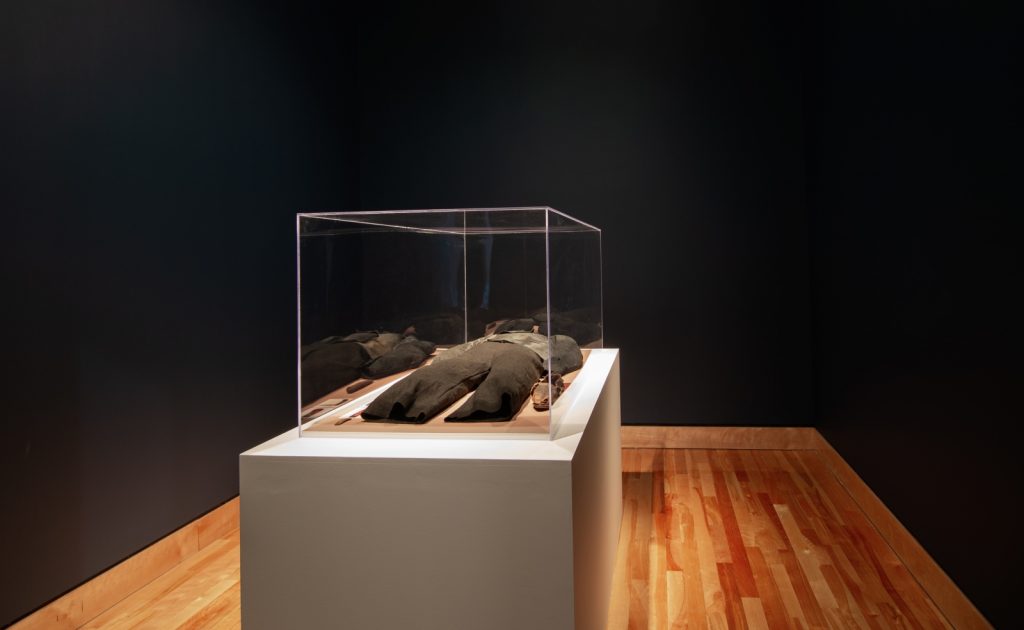
Meanwhile, Shelley Miller’s Trade (2020), constructed as a series of seemingly edible blue-and-white tiles made of icing sugar, gelatin, and edible inks and arranged in the form of a patchwork tile mural, offers a material commentary on the ways that the unfree labour of enslaved Africans and their descendants in the Caribbean supported and sustained European wealth. I’ve seen such tiles in many Dutch museums over the years, often decorating fireplaces and kitchen walls. Here, however, they tell a very different story, drawing out the triangle trade that linked Newfoundland and Labrador with Africa and the Caribbean. Perhaps because of my own Dutch family histories on my father’s side (histories that tangle simultaneously with Dutch Caribbean colonial histories of slavery and indenture on my mother’s side), this piece stood out most to me. The stickiness. The sweetness. The sugar that binds oppression and wealth together, all of it captured in innocuous blue and white tiles that you can buy in any cheesy tourist shop in the Netherlands. What was the cost of sugar? asks the title of a novel by Surinamese author Cynthia McLeod. What, indeed.
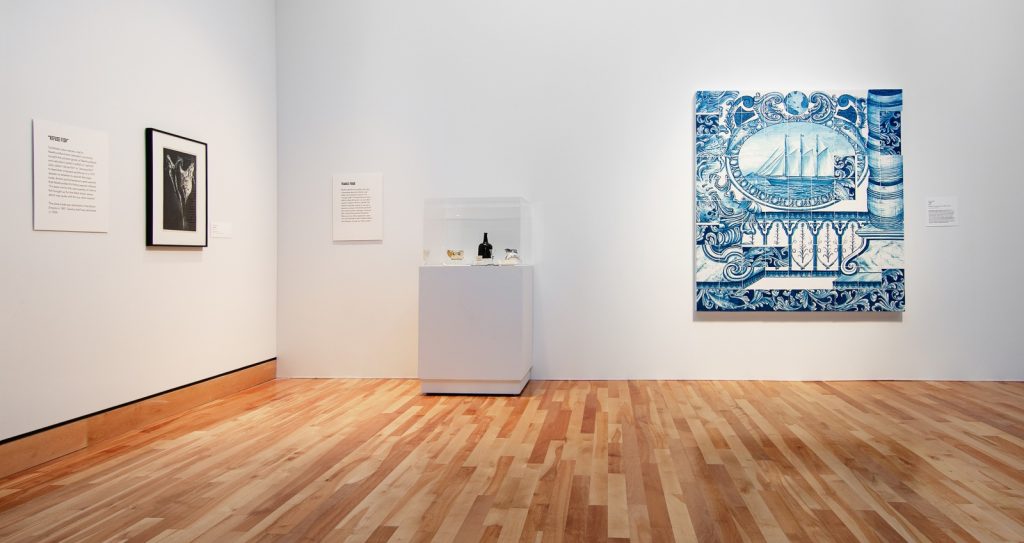
But silence is not just grief-laden or mournful in this exhibition—it’s also pointed, political, and playful. Camille Turner, whose Afronautic Research Lab featured at the 2019 Bonavista Biennale, returns here, locating histories of enslavement not just in faraway Caribbean colonies but also right here in this place. If the island of Newfoundland is seen, today, as an isolated outpost, its history gestures towards a long imbrication in the Atlantic slave trade. Turner’s immersive research lab, which includes not only film but also a table filled with books, archival materials, and the tools of the archival researcher’s trade (pencils, blank paper, magnifying glasses), chronicles the nineteen slave ships constructed here and reminds us that it’s all too easy to separate ourselves from messy, oppressive histories. It also asks us to consider what it means to take up a violent inheritance.
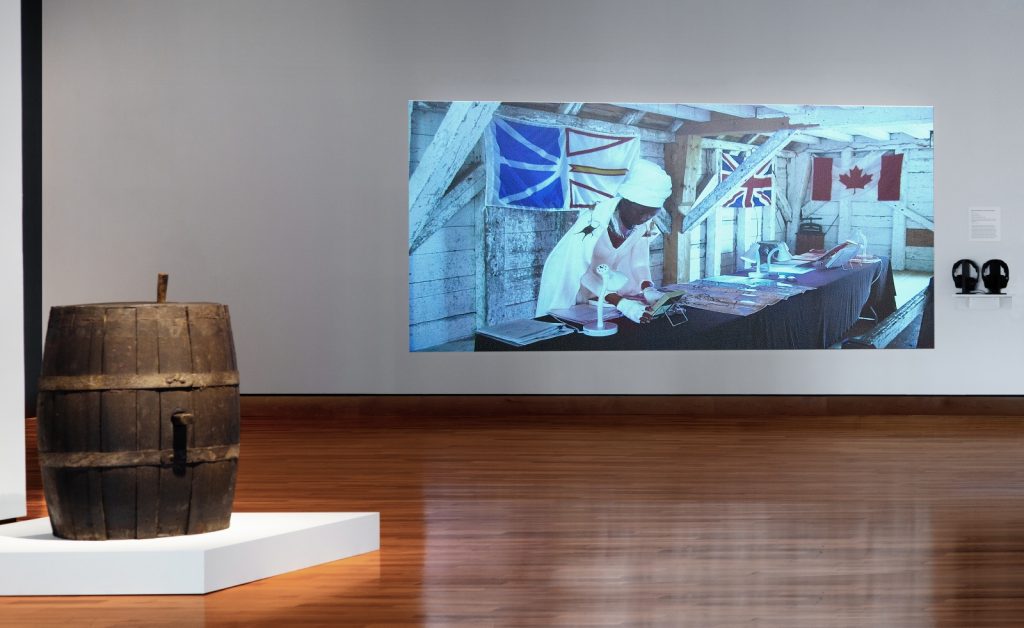
Photo: The Rooms
The work of Sonia Boyce takes a playful carnivalesque approach. In “Crop Over” (2007), a two-channel video installation, she chronicles a Caribbean festival, with all the colours, music, and dancing so common to many Caribbean celebrations. But Boyce’s “Crop Over” is playfully—and pointedly—subversive. Her characters dance not just in the streets but also through houses and landmarks created as a result of the trade in slaves and sugar. Stilt-walking folk figures dressed in sequined outfits romp through formal gardens and clamber around staid sitting room furniture. They plant themselves on stone balconies and peer around corners, their presence a mocking reminder of the unruly, colourful bodies whose unfree labour made these great homes possible in the first place. In many ways, “Crop Over” reminded me of the spoken word poetry of El Jones (“Dear Benedict” in particular): it’s cheeky, spirited, pleasure-filled, parodic, and, at the same time, deeply political.
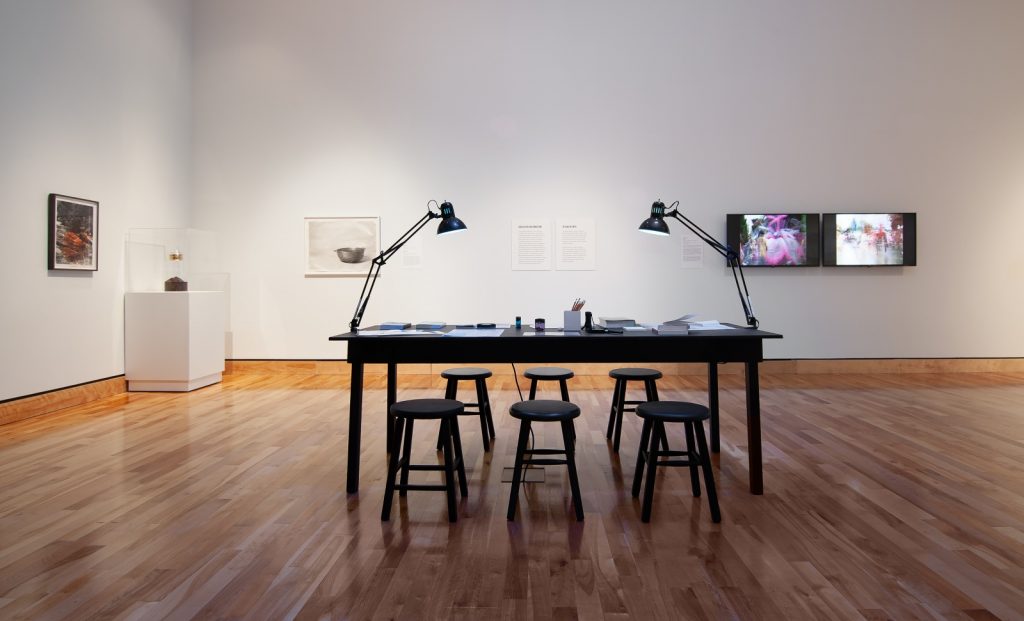
What Carries Us is not a large exhibition. And yet it packs a punch. Each element, from the archival materials to the archaeological artifacts to the artworks, offers an opening towards a reimagining and a retelling of Newfoundland and Labrador and the people who have visited its shores and called it home.


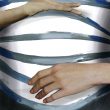













Leave a Reply